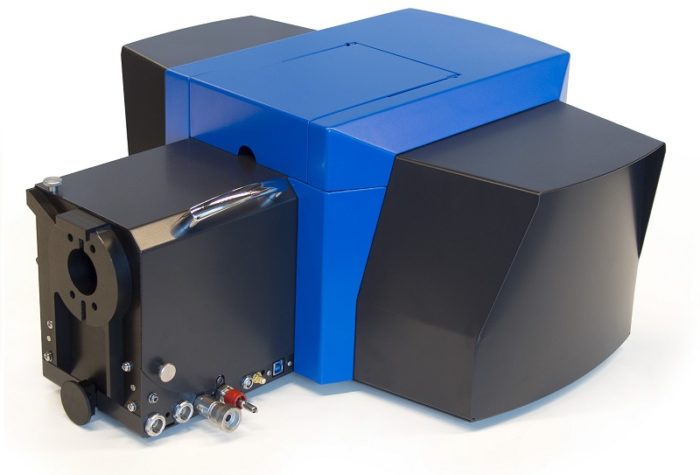Sparc cathodoluminescence detector
Description
The SPARC detector is a cathodoluminescence system that guarantees the highest resolution and reliability of results. A large, ultra-flat parabolic mirror is mounted in a precision array. All optics are coupled in such a way as to ensure maximum photon yield. The system is open and modular allowing the addition of additional optics and a wide range of detectors. Open source software – written in Python – makes it easy to add new functionality.
The system is tightly integrated with the scanning electron microscope. This is noticeable from both the hardware and software side. The system is connected to the microscope via a vacuum port in such a way that it is minimally invasive to the scanning electron microscope. The time required to switch from CL mode to the original SEM configuration is less than 5 minutes.
Specification
Features:
– Modularity
The SPARC system has an open design. Optical boxes can be easily replaced to expand and add new features to the system.
– Unmatched sensitivity
The mirror is made of a unique type of aluminum and has a small grain which ensures maximum flatness of its surface, enhancing reflectance, reducing measurement time and artifacts.
– Repeatability of results
The precision-made mirror system ensures accurate alignment between experiments. This makes it possible to make repeatable and quantitatively comparable measurements between different samples.
– Spectral mode
When using the SPARC system in spectral mode, light from the mirror is focused onto a fiber, which is then connected to a Czerny-Turner spectrograph. The silicon detector connected to the spectrograph is optimized in detection between 400 and 900 nm. By scanning the beam across the sample, the result is a hyperspectral image.
– Angular mode
The SPARC system provides a unique solution in obtaining images based on angular information. Instead of focusing the light signal on the fiber , the image from the mirror is projected onto the imaging camera. This allows detection of the direction of the emitted light, also known as spectroscopy of moments. In this mode, a circular filter is used to spectrally distinguish between different wavelengths of emitted light.
– Polarization mode
The use of a polarizer in images based on angular information allows the detection of dipole orientations in nanophotonic applications and the separation of polarization directions in a more general sense.




